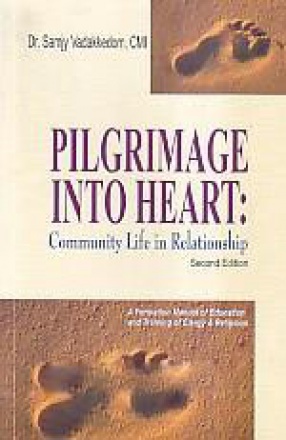A true cultural heritage of the Tamang Thakali lies buried in the dilapidating clan shrines, Bon shrines, Buddhist and Bon dKar Lamaist, Gompas, Kaka-ni, Mani walls, Choten, Kangyur chapel and holy frescoes which can still be encountered in profusion along the ancient Salt Route of the Upper Kali Gandaki Region in western Nepal. The religious, cultural and economic dominance of Tibet helped the Tamang Thakali transform their tribal existence into a highly civilised Buddhist community of the Himalayan region. It is therefore, justified that we should acknowledge the dignity of Tamang Thakali culture with its past accomplishments in the fields of religion, art, culture, commerce and politics rather than relegate these to oblivion. Any attempt to discredit the native Don (jhakrism), Bon dKar and Lamaist traditions of Thak Khola would not only be straying from the historic truth, but it would also prove to be a grave cultural loss for the Tamang Thakali. They are quite likely to be reduced to a class of middlemen traders without reputation of possessing distinct ethnic, social and religious characteristics. The ascendancy of the Rana family to power in the mid-nineteeth century in Nepal greatly favoured the position of the Tamang Thakali Subba family in the Thak Khola region. But an abrupt halt to Nepal-Tibet trade along the ‘ Salt Route’ due to the political charge inside Tibet in 1949, and the eventual downfall of the Rana family in 1951, spelled the end of the predominance of the Tamang Thakali Subba family in the Upper Kali Gandaki region. They could no longer rely on the salt trade with Tibet, over which they had enjoyed a monopoly. The presence of armed Khampa refugees in the region during their expulsion from Tibet proved to be unfavorable. A good number of well-to -do Thakali families were compelled to move their possessions to the southern region, leaving but empty dwellings behind. The laity also followed the pattern of their predecessors in the succeeding dacades, which eventually created some pressing problems concerning the ethnic, economic, social and spiritual identifications of the Tamang Thakali. Moreover, the Thakali’s recent claim to membership of the Chand, a Hindu Thakali lineage, and their rejection of the Mongoloid ethnicity and native traditions, has cost them a secure mooring to their past. In the past century, Tamang Thakali culture has undergone great vicissitudes and its traditional foundation has been considerably weakened. The Lamaist and Bon dKar monasteries have gone to ruin, the precious frescoes have been disfigured, relics of cultural and historic excellence have been discarded, Choten and Mani-walls containing the sacred slabs of engraved incantations (Sutra) from holy Kangyur and Tangyur have been thrown about all along the mule trail traditional faiths, be it the Bon dKar and Lamaist religions of Tibet, or native Don. However, it becomes an urgent task to restore the surviving Lamaist- Buddhist and Bon dKar monasteries and other monuments, which reposit not only exquisite clay and bronze icons, frescoes, Than-ka, wood-work and holy Buddhist canons, but above all, the genuine aspirations of the Tamang Thakali people, for they represent the history of Thak-Khola itself. During several sojourns in the Thak region, the author pondered: Will this beautiful culture be sustained?’ Perhaps the Thakali themselves do not have the answer. Despite their financial success in other parts of the country, a new challenge has come into being, as Shigeru Iijima puts it: ‘One of the most serious problems for the Thakalis after mass migration of their group to the urban centers of southern Nepal is the experience of identity crisis’. In fact, Tamang Thakali culture was already meeting its death at the hands of those who nurtured it, and it is quite unlikely to be revived through the existing policy of the government of Nepal. Although foreign interest in Thakali culture and the Thak region has increased manifold since the advent of tourism in the region in 1975, the alien interest will not help restore its former glory. Our main concern here is with Tamang Thakali living in the ‘thirteen villages’ known traditionally as ‘Thaksatsae,’ or Thak of seven hundred houses, on either side of the Kali Gandaki river in the temperate zone of the western region of Nepal. This particular stretch of the valley is called Thak Khola, but on the map it also encompasses Pancgaon and part of Barahgaon in the rain shadow area to the north. The romantic era of the Thak Khola region seems to have come to an end, for many scholars are new taking pains to unveil its much -discussed ethnic, social, religious and political history hitherto clouded with myth. The recent findings in the rock-cut cave burial of Mharshyang Kyu (Chokhopani) at ward number seven of Tukuche Gaon Samiti has shed light on the prehistoric Neolithic and Charcolithic patterns of human existence in the Upper Kali Gandaki basin of the Himalayan region. The antiquity of Thakali culture has undoubtedly proffered scope for serious investigations in the upper reaches of the Kali Gandaki, and require even greater effort from scholars in future. Manifold rendition of the Lamaist- Buddhist and Bon dKar iconography, being enveloped in the darkness of the chapels, has imposed a serious constraint upon this author, who therefore, hesitates to impart iconographical details of Lamaist and Bon dKar divinities in the present edition.
Along the Kali Gandaki: The Ancient Salt Route in Western Nepal: The Thakalis, Bon dKar and Lamaist Monasteries
In stock
Free & Quick Delivery Worldwide
Bibliographic information
Title
Along the Kali Gandaki: The Ancient Salt Route in Western Nepal: The Thakalis, Bon dKar and Lamaist Monasteries
Author
Edition
1st ed.
Publisher
ISBN
8173030219
Length
162p.
Subjects





There are no reviews yet.